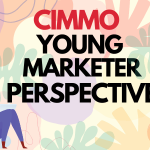
Welcome to the CIMMO Young Marketer Perspective where young professionals are providing us with their take on important topics in marketing. Our goal is to provide these marketers with a platform to share their learnings and experiences. Here Samrat Kamble provides marketers with tips to avoid cultural insensitivity in marketing.
Culture is a set of practices, beliefs, and values that differentiates one group of people from another. As a result of there being many different cultures, there is well-formed diversity throughout the globe. Diversity is a gift bestowed upon us by nature; it is what makes humankind unique and amazing. Small economies, each having some unique characteristics, together form a global economy. These unique characteristics are the differences in cultures. So what role can culture and diversity play in marketing? In this article I am going to outline how when culture is used incorrectly in marketing, it can have longstanding negative effects on a brand. If we aren’t careful, wrong judgment or ignorance of local culture can backfire for advertisers. Not researching local cultures before deploying advertising campaigns, can lead to cultural appropriation. This can result in cultures being mocked, patronized and misrepresented. Further, launching a campaign in a foreign locality without researching the culture, can be offensive to its residents. There are many examples of brands doing this. But one that caught my attention was by Dolce & Gabbana, an Italian luxury fashion brand.
In November 2014, Dolce & Gabbana launched three videos on social media in China to promote their fashion show, Shanghai Runway Extravaganza. The video featured an Asian woman eating Italian food items like cannoli, pizza, and spaghetti with chopsticks (Sunrise Sunset, 2018). The video consisted of intentional mispronunciations of words that mocked the Mandarin language, a patronizing voice asking the model whether the cannoli is too big for her, and a few more acts the locals found to be stereotypical, perhaps even racist. This resulted in a huge outburst of anger amongst the citizens calling the video outright racist, and demanded a boycott of the brand. Later, Dolce & Gabbana issued an apology statement, but it was too late. The show had to be canceled and it also resulted in e-commerce sites like Alibaba and JD.com removing D&G products from their sites. (Xu, 2018). According to a report by a London-based finance consultancy firm, this incident could have hurt 20% of the brand’s value estimated to be around $937 million. Chinese customers spend approximately one-third of the global spending on luxury goods, according to Bain consultancy. (Associated Press, 2018)
The D&G advertising gaff is an example of how certain marketing practices that are used in the western world, like using cultural humour, might be offensive and hurtful in non-western markets. Here are some measures I think could be taken by advertisers to avoid these mistakes:
- Consult the experts: Conducting a survey or running focus groups among a group of culture experts would help advertisers understand practices and humours that should be avoided.
- Be aware of social norms: Paying attention to social norms and conforming to them is very important for acceptance. Conduct secondary research in the culture you are planning to advertise. Avoid jokes and phrases that challenge the social norms of the locals that result as unacceptable during your research.
- Use local advertising agencies: Partnering with a local advertising agency helps to better understand the local culture. They will help develop ads that match the taste of the local consumers. This approach also helps to mitigate the risk of cultural backlashes.
REFERENCES
Associated Press. (2018, 11 27). Dolce & Gabbana fiasco shows importance, risks of China market. Retrieved 09 04, 2020, from NBC News: https://www.nbcnews.com/news/asian-america/dolce-gabbana-fiasco-shows-importance-risks-china-market-n940706
Sunrise Sunset. (2018, 11 26). Full Commercial | Dolce and Gabbana China | Full Ads. Retrieved 2020, from YouTube: https://www.youtube.com/watch?v=TBFC5isQuYA
Xu, Y. (2018, 12 01). Dolce & Gabbana Ad (With Chopsticks) Provokes Public Outrage in China. Retrieved 07 11, 2020, from npr: https://www.npr.org/sections/goatsandsoda/2018/12/01/671891818/dolce-gabbana-ad-with-chopsticks-provokes-public-outrage-in-china







No comment yet, add your voice below!